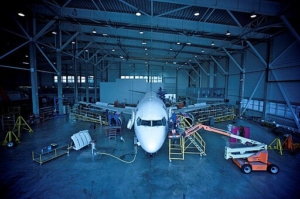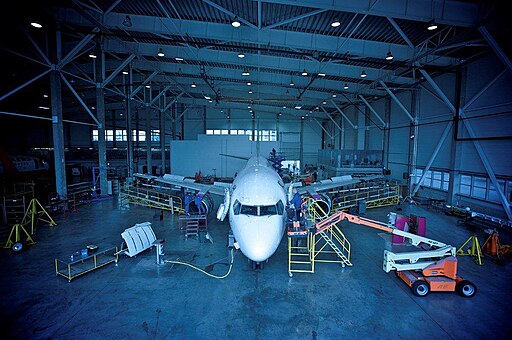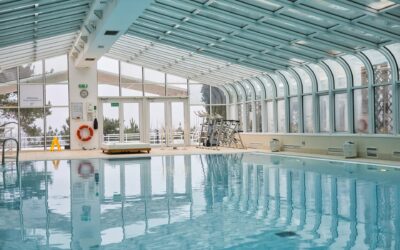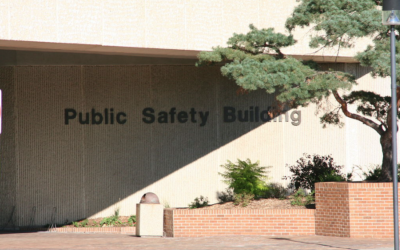The U.S. Department of Defense (DOD) has many large construction projects with launch dates planned for 2025. The projects will be federally funded and implemented in multiple states across the nation. Contractors from multiple specialties and industries will be essential for completion.
A $13.8 million Department of Defense (DOD) project is being planned with the objective of modernizing the Iowa Army National Guard’s vehicle maintenance shop in Sioux City, Iowa. It calls for delivery of a new 25,391-square-foot facility with full-size drive-through maintenance bays, administrative offices, and specialized storage areas. Project components will also include 8,200 square yards of paved roads and parking areas to enhance operational efficiency. Sustainability is a top priority for the facility, with a goal of achieving LEED Silver certification. To meet this standard, the project will require the installation of high-efficiency LED lighting, geothermal heating, and solar panels. An environmental assessment for the project began in February 2024, and initial pre-construction work is currently underway. Construction is expected to commence in 2025.
In Yuma, Arizona, a training facility is the focus of a planned $62 million construction project at the federal Military Free Fall School Advanced Training Complex. The project will call for a new 155,000-square-foot facility capable of consolidating operations that are currently in 14 outdated and dispersed buildings. The complex will include a company headquarters, general instruction spaces, an airborne equipment and parachute rigging facility, and a covered parachute landing fall pit. The project will focus on sustainability, requiring the incorporation of energy-efficient systems and Anti-Terrorism/Force Protection components. Upon completion, the facility will be poised to meet the growing operational demands of the school and its training complex. The design work has been completed and a contract award is anticipated by or before a designated deadline of March 2025. Construction is slated to begin in the summer of 2025 with a two- year delivery timeline.

Photo courtesy of Tadas1980.
The U.S. Navy will invest $116.96 million in a state-of-the-art aircraft maintenance hangar at Marine Corps Base Hawaii. The project will be designed to support Fleet Logistics Squadron 51 with its critical C-40A Clipper aircraft. The hanger will address essential operational needs by providing advanced maintenance and storage capabilities, inspection areas, and anti-corrosion/storm protection for the planes. The new facility will incorporate cutting-edge features such as advanced cybersecurity measures, energy-efficient systems, and sustainable design elements. The project will also include an aircraft parking apron, modern administrative offices, and enhanced mechanical systems designed for high operational demands. The design work should be completed in 2025, and a construction launch will occur later in the year.
An Army National Guard armory facility, or readiness center as it is normally called, is planned for Peoria, Illinois at a cost of approximately $40 million. The funding has been secured and the design phase is expected to last approximately eighteen months with the construction phase kicking off sometime in 2026. When the project is completed, the National Guard at the Peoria International Airport will move its stored helicopters into the updated facility which will also serve as a backup headquarters for the state’s National Guard in case of emergencies. This project will provide interested contractors with ample opportunity to engage with officials and acquire detailed information regarding the development plan.
A $35 million project at the U.S. Navy’s Cold-Water Training/Austere Environment Facility in Keyport, Washington is being designed to enhance the Naval Special Warfare Group’s training capabilities. A 34,700-square-foot building will be constructed to support critical training for undersea mobility operations. The new facility will feature a dive air system, a hyperbaric chamber, and advanced infrastructure to support dry combat submersible and SEAL Delivery Vehicle operations. The building will be designed for energy-efficiency and low-impact development features that are required for Department of Defense’s high-performance buildings. Cybersecurity measures and Anti-Terrorism/Force Protection standards are among the design’s top priorities. The project also calls for the demolition of 6,000 square feet of outdated structures. A contract award will be made by March of 2025 and construction is slated to begin by December of 2025.
A project to deliver a new Armory to Marine Corps Base Camp Lejeune carries a projected cost of $25.4 million. The facility will be designed to address critical operational and storage needs for the Special Operations Command. It will provide modernized armory space for specific weapons and equipment essential to mission readiness and training. When completed, the single-story armory will span 35,800 square feet and feature reinforced concrete construction, steel roof trusses, and a standing seam metal roof. It will have built-in equipment, weapon cleaning solvent tanks, compressors, and secure armory cages. Special construction elements will address pile foundations, wetlands mitigation and stormwater management. Energy-efficient systems, advanced cybersecurity measures, and Anti-Terrorism/Force Protection will also be called for in the project. Construction is planned for 2025.
DOD projects require specialized capabilities with unique technologies, equipment, and construction guidelines. However, there will be an abundance of upcoming contracting opportunities stemming from these projects, for both large prime contractors as well as minority-owned and small business subcontractors.







